Milwaukee Track Saw
Milwaukee M18 FUEL 6-1/2” Track Saw 2831-20 Review
Milwaukee M18 FUEL 6-1/2” Track Saw
Folks at Milwaukee like to say that they believe in doing the right tools at the right time. So, after seeing everyone else’s saw and hearing users’ criticisms, folks want to know two questions:
- Did Milwaukee get it right?
- Did they achieve breakthrough innovation? I’ll address this at the end of the article.
The short answer is yes, they got it right – though I’d be ashamed if they didn’t, with all the time they took. They paid attention, heard users echo similar pain points on other track saws, and strategically addressed them. Some of the major pain points they’ve addressed:
- Underpowered competitor track saws
- The need for two batteries
- Battery placement was difficult to access or interacted negatively with performance
- Awkward plunge mechanism
Their response to these five user pain points was to focus on a saw that:
- Has the ability to operate on one 18v battery
- Was powerful
- Makes consistent, repeatable, accurate cuts
- Offers many features
- And has a robust design
Milwaukee M18 FUEL 6-1/2” Track Saw Specifications
- 90 degrees 2-1/4
- 45 degrees 1-5/8” [e.g., Festool cuts 1-7/16]
- Bevel range -1 to 48 degrees
- Blade size 6-1/2”
- Blade arbor 20 mm
- Blade kerf 0.063 [1.6mm]
- Riving knife thickness 0.055” [1.4mm]
- Weight 9.8 lbs.
- 18 Volt
- 2500 to 5600 RPM
Milwaukee Track Saw | Power
The Milwaukee M18 FUEL 6-1/2” Track Saw weighs 9.8 lbs. and has a variable speed dial that allows the saw to be adjusted from 2500 to 5600 RPM.
Its motor was specifically designed as a track saw motor. It is not a repurposed circular saw motor. In fact, it has unique copper windings that directly affect the saw’s RPMs, and when used with a 6Ah HD battery this saw achieves corded saw power.
Power Testing
When testing the Milwaukee M18 FUEL 6-1/2” Track Saw for cutting power we wanted to use a hardwood that is known for its hardness. When determining the hardness of hardwood, we often refer to the Janka scale.
The hardness of wood is rated on an industry standard known as the Janka test, which measures the force required to embed an 11mm steel ball into the wood by half its diameter.
For us, this test is one of the best ways to educate clients on denting and wear and tear on hardwood flooring or wood decking. It is also a good indicator of how hard the wood will be on your tools when cutting.
In the shop, we tested the M18 saw by cutting ¾” Ipe, Mahogany, Maple, and 2” Poplar which are common hardwoods we encounter. We also cut ¾” Purpleheart. It had zero issues cutting any of these hardwoods. Its motor didn’t bog or slow down and it cut the material with ease.
I was curious how the Milwaukee M18 track saw power compared to our cordless Makita track saw when cutting, so we did some side-by-side cutting to compare. We also used the corded Festool TS 55 FEQ track saw as a benchmark
For this comparison, we installed a new 40-tooth blade on all three saws and made a series of cuts through ¾” Purpleheart and 2” Poplar. Purpleheart wood is rated at 1,860 on the Janka scale.
We ran each saw through the Purpleheart, using the sound of the motor to guide our push rate. The corded TS 55 FEQ Festool saw was clearly the more powerful saw when cutting the ¾” material but not in the 1-1/2” material.
When cutting 1-1/2” inch Poplar there was no discernable difference in motor strain or resistance between the Festool and Milwaukee saws. Both saws cut at the same rate and resistance.
We did notice a difference between the 36-volt Makita and the 18-volt Milwaukee with the Milwaukee being slightly more powerful in the Purpleheart and faster when cutting the 1-1/2-inch Poplar.
Precision
We found the Milwaukee M18 FUEL 6-1/2” Track Saw saw accurate out of the box at 90 and 45 degrees. Additionally, the saw blade lines up perfectly on the splinter guide track strip at both settings. We’ve seen other saws cut into this strip when set to 45 degrees.
Track and Blade Compatibility
Milwaukee was smart; they designed their saw to be compatible with other manufacturer tracks [i, e., Festool, Makita] and put a 6-1/2 blade with a 20 mm arbor to be consistent with all the other tracks saw blades. This makes sense since users may decide that the Milwaukee track saw is nicer than the saw they currently use, allowing them to switch saws without having to purchase new blades or tracks. Very smart move on their part.
By using the 6-1/2” blade, they can cut 2x material while their direct competitor, Festool — which has a 6-1/4” blade — cannot.
One nice safety feature on the saw is its anti-tip knob. This knob works great at keeping the saw on the track when set at a bevel. We did notice that when using the Milwaukee saw on a Festool track the anti-tip will not work.
The track adjustment cam or rail slot adjustment worked perfectly to adjust the saw to the track. It worked on the Festool and Makita tracks as well.
We noticed a slight issue when combining different manufacturers’ tracks. When combining the Milwaukee and Festool tracks together, there were slight thickness tolerances on the track rail.
This impacts the saw’s track tensioner, and as the saw leaves the Milwaukee track and hits the Festool track you may not have the same tension to the track. Additionally, you will also be unable to use the anti-tip feature once on the Festool track – it doesn’t work.
The Milwaukee track, like other tracks, has a non-slip grip that works well and is compatible with standard track clamps. The Milwaukee track clamps are robust, heavy, and work well.
Note – The Milwaukee clamps are approximately 1 inch taller and deeper than the Festool clamps I use.
To combine two tracks together, there are two track connection bars that slide in and mount on the top and bottom of the tracks, similar to Festools’ new track design. We found the connection bar to work exceptionally well, with no issues.
Milwaukee Tracks Come In Three Lengths:
- 31” Guide Rail
- 55” Guide Rail
- 106” Guide Rail
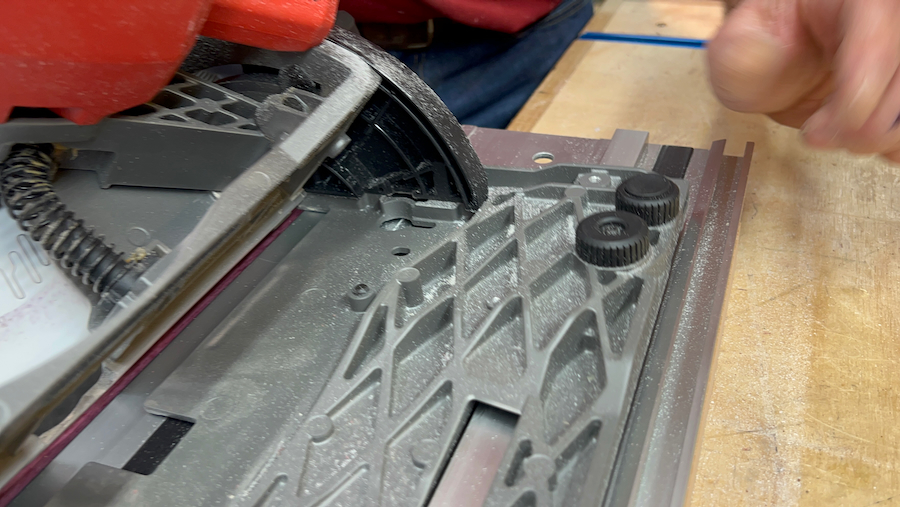
Rail Tension Knobs
Like all track saws, the two-rail tension knobs keep the saw snug on the track. These knobs worked well on Milwaukee’s track as well as Makita and Festool.
Rail Tension Bars
On the bottom of the saw’s Magnesium shoe plate are a set of “replaceable” rail tension bars with screws. Milwaukee observed that some competitors only use metal which can significantly wear over time to the point that they can’t be adjusted to be snug on the track. They found that using plastic eliminated a failure point on the saw and the plastic reacted better with the aluminum rails. By making them serviceable and replaceable, Milwaukee eliminated a potential failure point.
Also worthy of noting is that the saw’s Magnesium plate can be removed and replaced if dropped or damaged. Milwaukee does not advise that end-users replace the shoe plate, as it requires a specific fixture to achieve correct alignment and calibration.
Dust Collection
When we started looking at the Milwaukee M18 FUEL 6-1/2” Track Saw, our dust collection performance hypothesis was that the window designed for the blade change was robbing vacuum airflow, thus reducing dust collection efficiency.
We took several videos cutting different depth materials — first with the window open, and then with blue tape covering the hole. We evaluated the dust left on the table after making cuts and the difference between the two was negligible. You’re going to get good results when using this saw with a vacuum.
The Milwaukee M18 FUEL 6-1/2” Track Saw has some unique geometry designed into the inside of the blade guard to assist with airflow, reduce friction, and achieve efficient dust collection.
Milwaukee set out to find out how to move dust more effectively from the tip of the blade to the dust port. They conducted “airflow analysis,” and studied slow-motion videos on dust particle inertia from competitor saws to arrive at their blade guard and dust port design and location.
The dust port has the most common port on tools which is 1/7/8” and fits their vacuums as well as standard compatible vacuum hoses. My Festool hose fits inside the dust port nicely.
Milwaukee offers an optional clamping vacuum adapter that can replace this dust port. This clamp adapter is smaller and meant specifically to use with their M18 Backpack Vacuum and other M18 vacuums.
Dust collection is one area I feel Milwaukee dropped the ball – this was the perfect place for them to add Bluetooth functionality to the saw and their vacuums. Unfortunately, the only option right now is to use their Universal Wireless Dust Control Adapter & Remote Control Kit 0950-20 to control the vacuum or a competitor’s version.
In my shop, I use Festool Bluetooth remote control and CT extractor. In the field, I don’t have a Bluetooth solution yet.
I’m guessing when Milwaukee takes a second swing at the track saw we’ll see Bluetooth technology. I just wish they did it on this release.
We tested the track saw’s dust bag and were unimpressed. Like all track saw bags, its dust collection is not efficient, it fills quickly and can clog up the dust port if you’re not paying attention. I use the bag only when I’m making one or two cuts and I’m too lazy to drag out the vacuum.
The blade-viewing window guard and splinter guard did seem to help with dust collection and we used it quite a bit.
Electric brake
The electric brake safety feature on the Milwaukee track saw is super-fast. Not much more to say about that; I’ve seen a few saws go around a bit, but not this one.
Milwaukee Track Saw | Riving Knife
Another safety feature of the Milwaukee M18 FUEL 6-1/2” Track Saw is its spring-loaded riving knife. The riving knife is designed to maintain a gap between the board and the cut-off board. It prevents the kerf gap from closing and causing pinching on the blade, which can sometimes initiate a kickback.
The hole just above the riving knife exposes a star-drive screw that allows you to adjust the riving knife or remove it for plunge cutting.
Milwaukee Track Saw | Hash Marks
If you look closely there is a unique feature that you may have missed on the M18 track saw. There are four hash marks near the riving knife, as well as at the front of the saw. These marks also appear on the clear dust guard, and black splinter guard.
The hash marks are designed to let you see where the saw blade starts and stops to prevent overcutting or when plunge cuting.
To use the hash marks, you need to line up the front and rear blade position indicators with your cutting line. These lines show where the blade will cut when plunged when using a rail guide.
1. The two inner hash marks are set for ½” depth
2. The next two are set for ¾” depth
3. The next two are for 1-inch depth
4. The outermost has marks set for the full depth of the cut.
Changing the Blade On The Milwaukee Track Saw
The Milwaukee M18 FUEL 6-1/2” Track Saw has a “lock-off” button that lowers the saw and locks it in a plunge position. Once engaged the saw blade arbor nut is exposed in the blade change window. An onboard Allen wrench which is smartly and tightly located in the saw’s upper handle [top of saw] is used to remove the blade.
Saw Pivot and Plunge Mechanism
Milwaukee spent some time on the saw’s pivot/plunge spring and mechanism. They obviously heard our feedback on other brand saws [i.e., DeWalt’s plunge mechanism]. The M18’s plunge spring is robust, and the plunge movement is smooth and controlled — they clearly got this right!
The Milwaukee trigger safety release button allows the trigger to power the tool. It is centered, ambidextrous, and easy to activate.
Depth of Cut | Depth Scale | Bevel Cuts
- Depth cut at 90-degrees: 2-1/4”
- Depth of cut at 45 degrees: 1-5/8
- Maximum bevel: -1 to 48 degrees
The saw bevel is controlled by two thumb knobs [front and back] on the saw. To achieve -1 or a bevel greater than 45 degrees [48-degree max] there is a bevel override slider, which moves forward and allows the saw to achieve the extreme bevel cuts.
We found that setting a bevel on this saw was like most of the other saws. It was intuitive, fast, and easy.
The depth of cut scale is highly visible and easy to learn. There are two rows of marks, one hash mark, and two hash marks, to indicate the depth of cut on or off the track. The two marks indicate the depth of cut on the track.
- 2 hash marks = On track
- 1 hash mark = Off track
The depth of cut is controlled by an intuitive and easy-to-operate slider. At the top of the slider is a fine adjustment depth screw for dialing in micro-adjustments.
The shoe plate on the saw also has indents indicating the saw blade location at 90 and 45 degrees when using the saw off the track.
I don’t find myself using a track saw off the track, but I can see where this might be useful. For example, making a free hand cut to a floor where it is close to the wall, where the track doesn’t fit.
To activate the 22.5 bevel detents, there is a button on the front of the saw bevel frame that pulls out and rotates. This button is simple to use and actuate.
Scoring Cut Stop
Now, this is a feature that I should use more when cutting cabinets and certain veneers. The button, once activated, only allows the saw to make a 1/6” [1.5mm] deep scoring cut which helps achieve a cleaner, splinter-free cut.
Battery Attachment
The battery location at first glance seems like it would interfere with the user’s support hand, but it doesn’t. Milwaukee thought through the battery placement to better balance the tool, as well as access it easily without the tool or track interfering. The battery also inserts and detaches easily from the tool.
Milwaukee Track Saw | Fit and Finish
I didn’t have to use this track saw long to get that “first impression” feeling on fit and finish. The build quality on the saw is robust and if I had to use one word to describe it, I’d say “outstanding.”
Milwaukee Guide Rails & Additional Accessories
- 48-08-0570: 31” Guide Rail
- 48-08-0571: 55” Guide Rail
- 48-08-0572: 106” Guide Rail
- 48-08-0573: Guide Rail Clamps
- 48-08-0574: Guide Rail Connector
- 48-08-0575: Anti-Splinter Strip
- 48-08-0576: Guide Rail Bag (Only fits the 31” and 55” rails)
- 48-08-0577: Non-Slip Strip
Milwaukee Track Saw Blades | 5 different types:
- 48-40-0624: 6-1/2” 24T General Purpose Track Saw Blade
- 48-40-0625: 6-1/2” 40T Finish Track Saw Blade
- 48-40-0627: 6-1/2” 48T Fine Finish Track Saw Blade
- 48-40-0670: 6-1/2” 4T Fiber Cement Track Saw Blade
- 48-40-0643: 6-1/2” 52T Laminate Track Saw Blade
Comparing Track Saw Prices
The Milwaukee track saw sells for $399.00 as a bare tool and $859.00 kitted. The kit comes with a Packout storage box, 6.0 HD battery, rapid charger, 55″ track, dust bag, and 2 clamps.
We feel that this saw is priced competitively for Pro-users. Its build quality and feature-rich design elevate this saw to top-tier pricing.
| Cordless Track Saw Pricing | |||||||
| Brand | Kit Price | Price W/Track, Batt & Charger | Track | Batt / Chrger | Case | Dust Bag | Rip Guide |
| DEWALT 60V | $619 | $619 | Track Included - 59" | Included | Yes | No | No |
| Festool 36V | $779 | $934 | Not Included. A 55" track is $155.00 | Included | Yes | Yes | No |
| Mafell | $860 | $1,327 | Not Included. A 5'2 Track is $176.00 | Not icluded. Add $467 | Yes | Yes | Yes |
| Makita 40V | $629 | $729 | Not Included. A 55" track is $100 | Included | Yes [2] | No | No |
| Makita 36V | $529 | $629 | Not Included. A 55" track is $100 | Included | Yes [2] | No | No |
| Milwaukee 18V | $859 | $859 | Track Included - 55" plus bag and [2] clamps | Included | Yes | Yes | No |
Milwaukee Track Saw Warranty
I don’t talk enough about warranties on tools, and some of you call me out on that.
Milwaukee is offering a 5-year tool and 3-year battery warranty on the track saw. I think 5 years is generous for any tool that is used in a professional setting. Although the track saw is clearly not going to see the same use as my circular saw, reciprocating saw or impact driver, 5 years seems right.
Did They Achieve Disruptive Innovation?
Milwaukee certainly took their time releasing a track saw. While they had plenty of time to build in the best features, great power, and precise accuracy, they did not achieve disruptive innovation. By that, I mean that Milwaukee’s track saw does not solve a pro user’s needs in a way that completely breaks away from what was done in the past.
They did however add a pro-grade, accurate, well-built, robust tack saw to their M18 battery platform, rounding out the carpentry trades nicely. Don’t get me wrong – this saw is excellent and is close to being on par with the Festool track saw. [Festool’s does have an electronic riving knife and Bluetooth capability, which Milwaukee’s doesn’t]
Conclusion
I’ve seen lots of comments online about the cost of this tool which I find silly. Not only is this saw close to being on par with Festool, but it’s also more powerful. At ToolBoxBuzz, we feel that the M18 track saw is priced perfectly for pro-users.
This saw outshines Ryobi, Dewalt, and Makita 100%, and has better power than Festool. If you are on the M18 platform, this track saw is a no-brainer — don’t look anywhere else. If you’re choosing between Milwaukee and Makita – get Milwaukee. If you’re on the Festool platform already and invested in that tool and track system then don’t bother switching over, you’re good.
Lastly, if you want the best track saw ever made, take out a loan and get a Mafell — it’s awesome.
My final thought: As a professional contractor, the M18 track saw has made me more efficient and raised the level of my finish-cutting quality, and comes in at a fair price for a professional tool.
Well done, Milwaukee. You took what others did right and wrong and brought together a well-built, robust, powerful, and accurate track saw. Now hurry up and get us that Bluetooth dust extraction technology.
About the author
6 Comments
Leave a comment
Disclosure
Product reviews on this site contain our opinion of a product or service. We will always strive for objectivity and transparency in our reviews. Our goal is to provide readers with honest, objective information based on our own experiences. We never have and never will accept payment in exchange for a positive review. Many of the products that we review are provided to us for free by a manufacturer or retailer. In some cases, we also have advertising or affiliate relationships with manufacturers and retailers of products and services we review. For additional information please visit our additional disclosure policies.











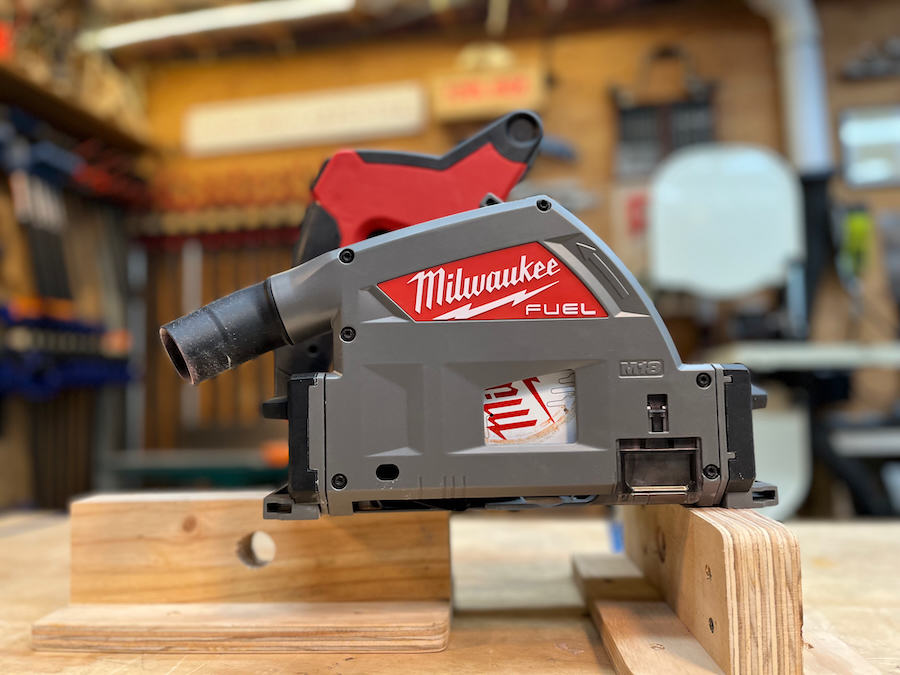
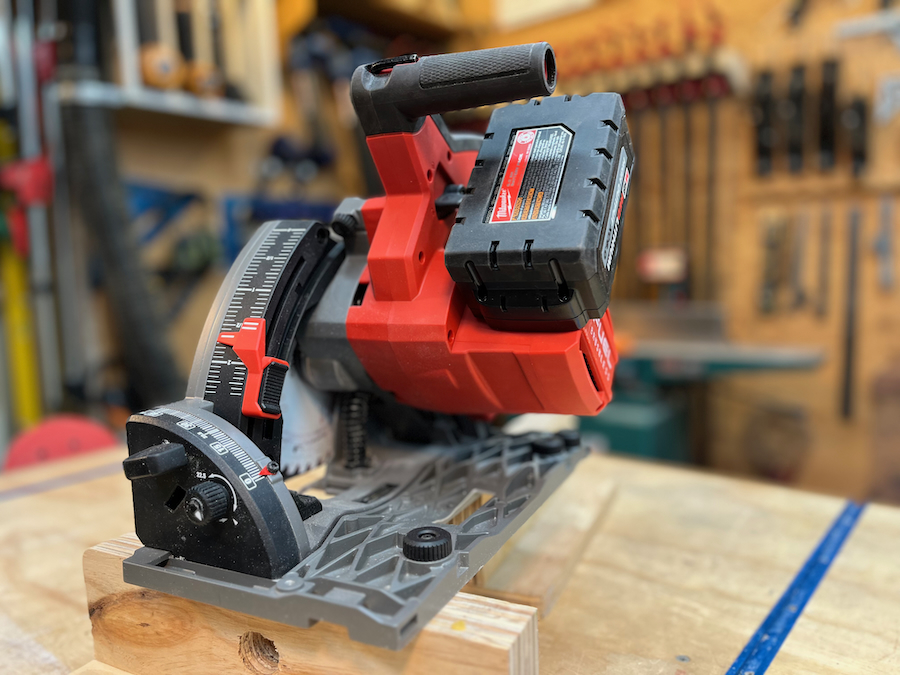
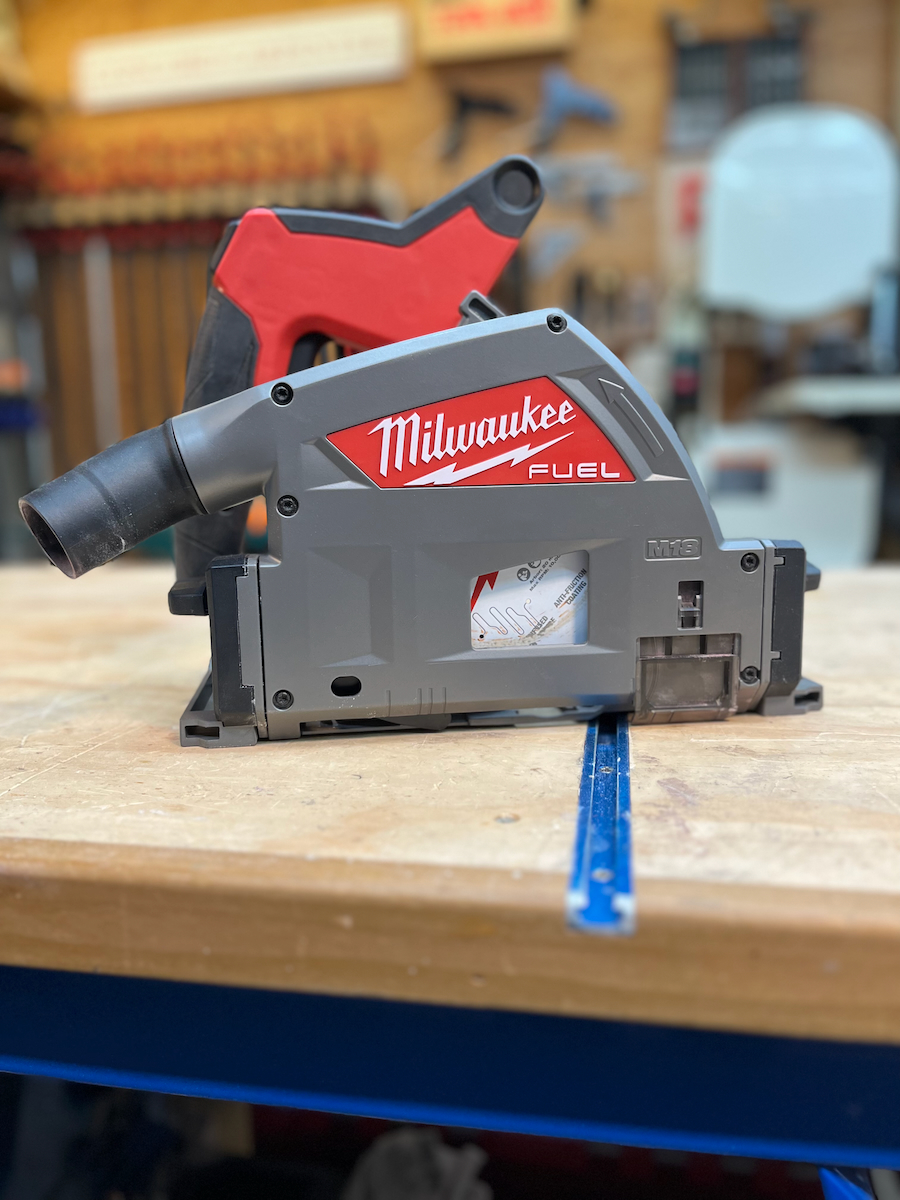
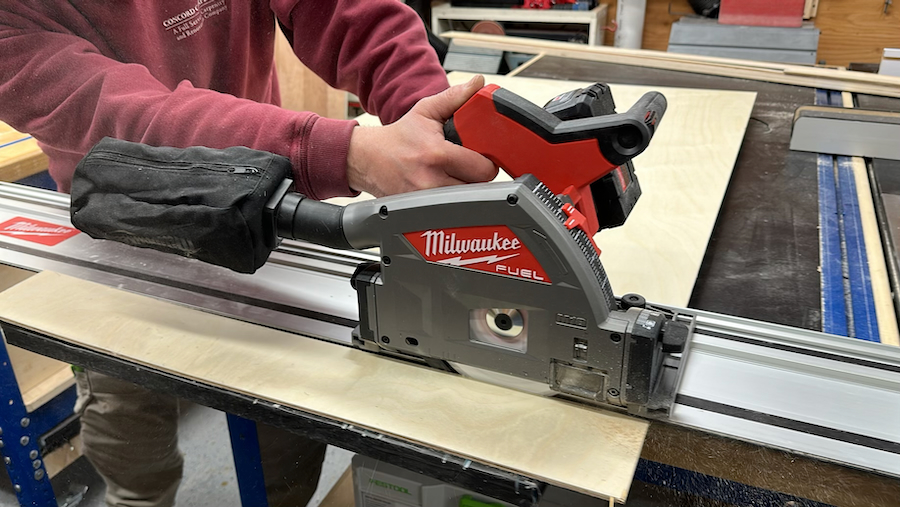
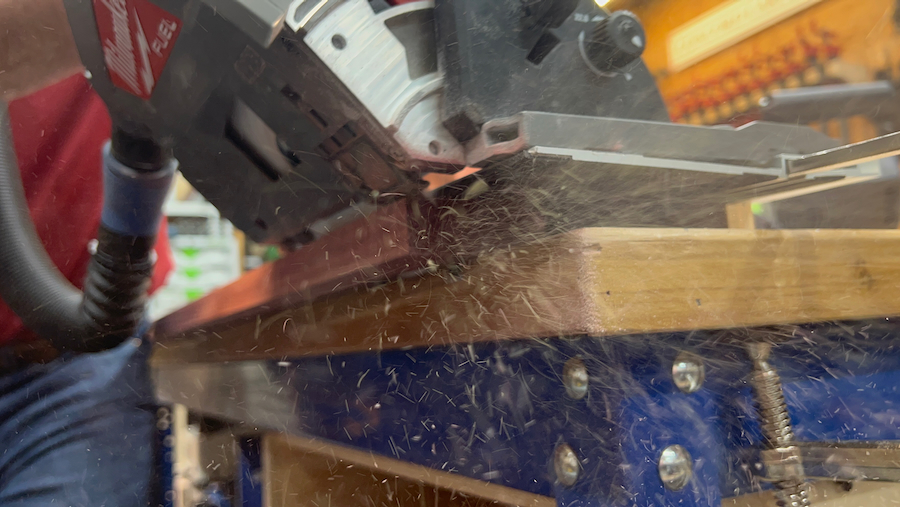
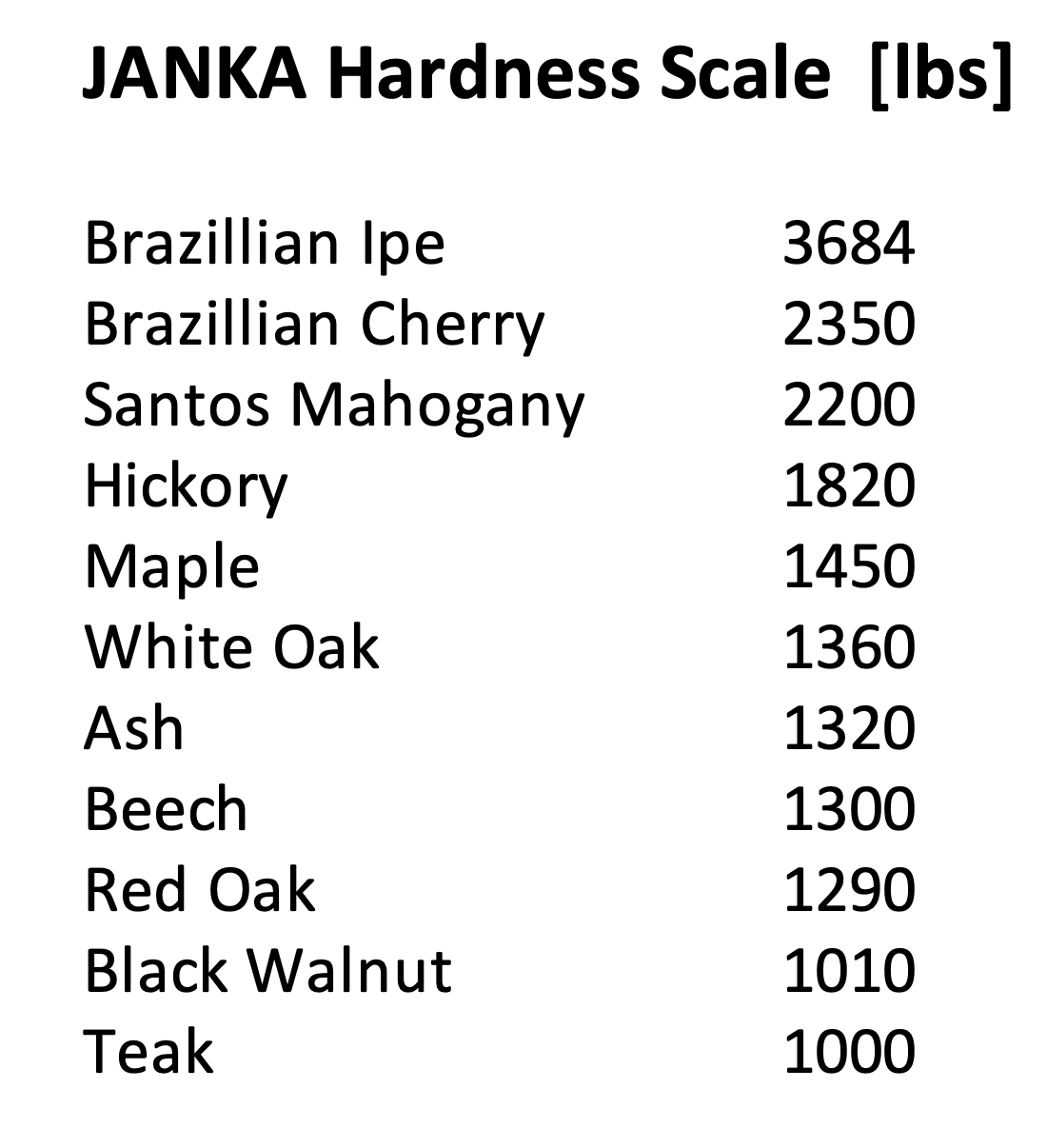
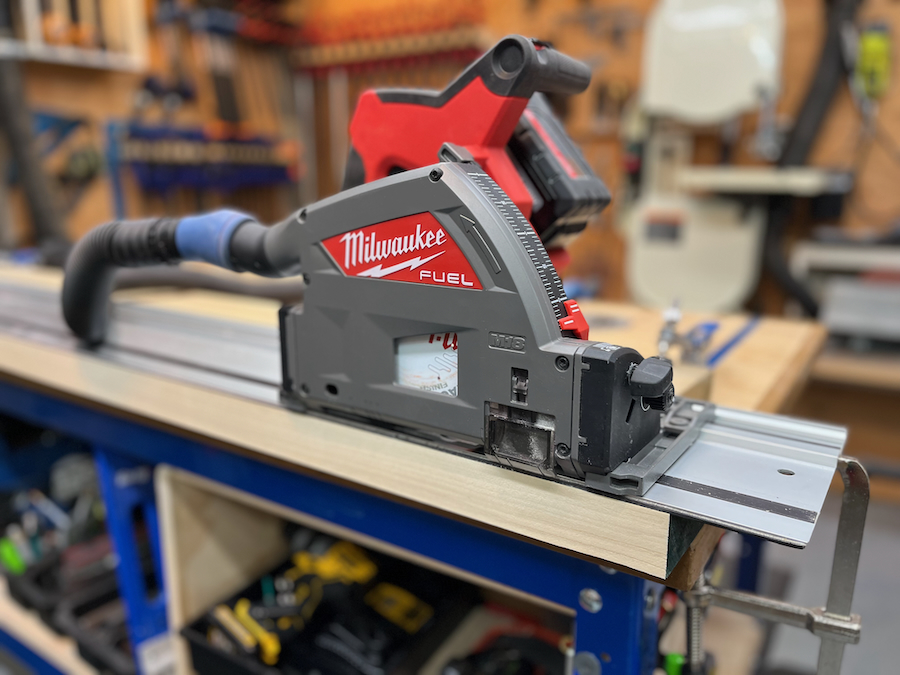
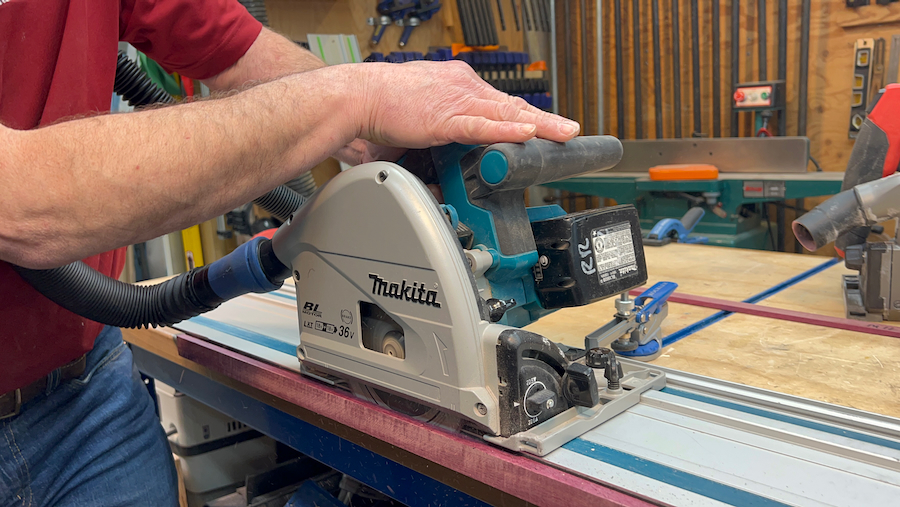
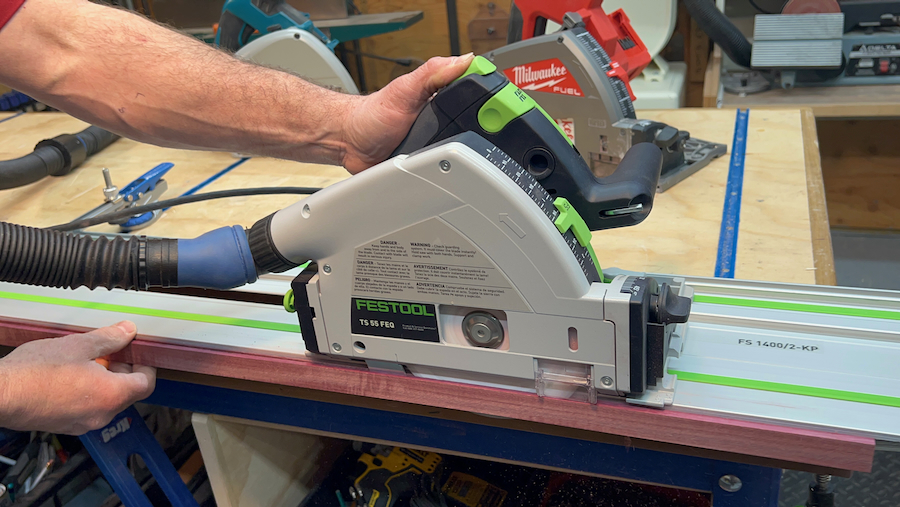
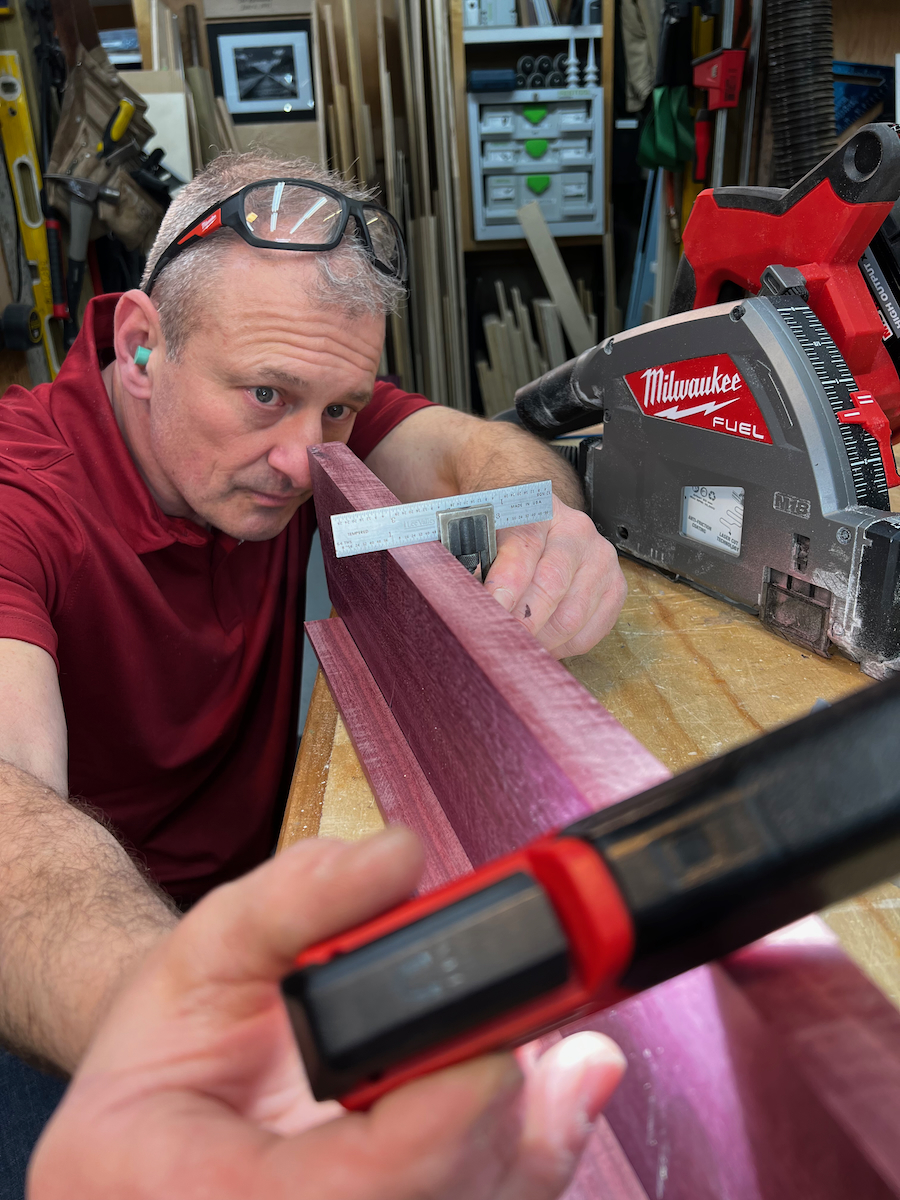
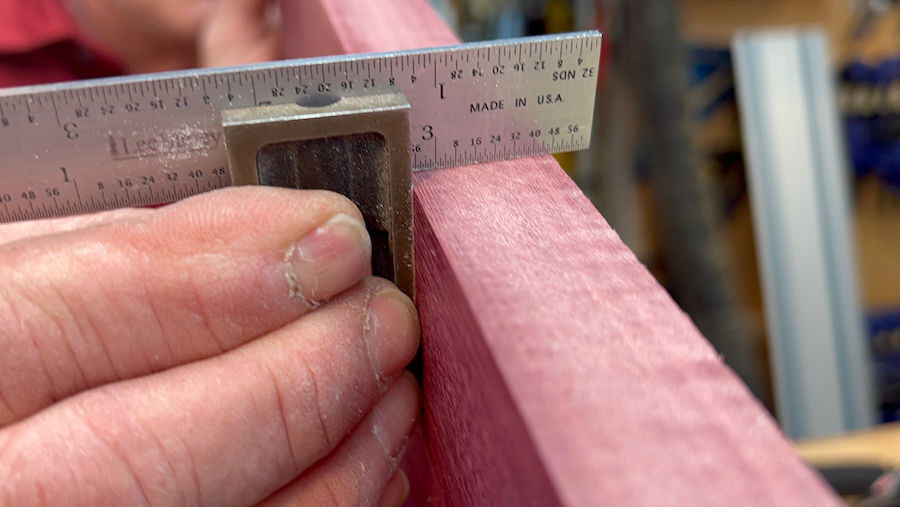
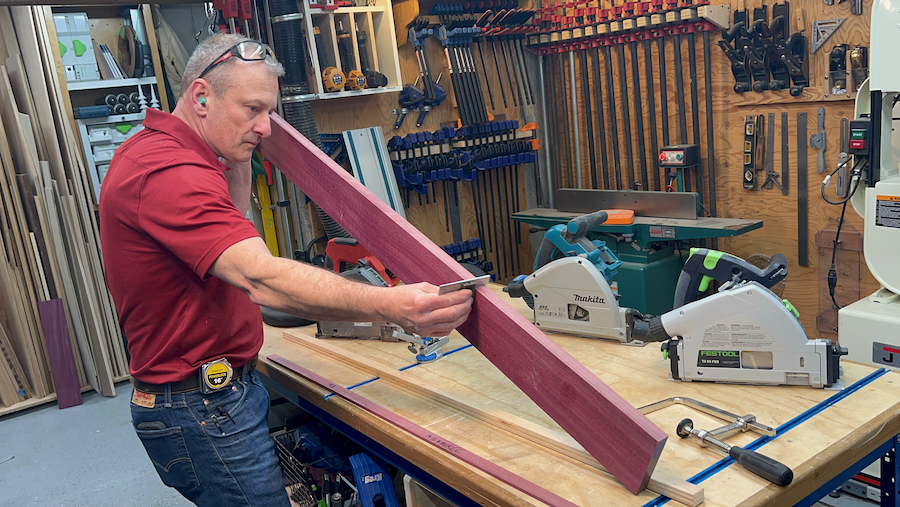
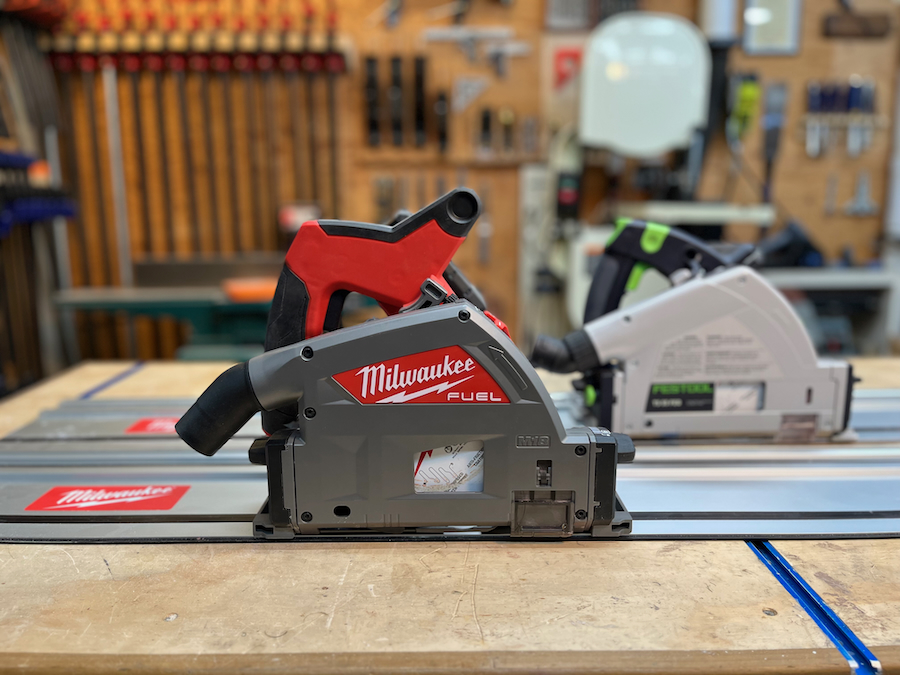
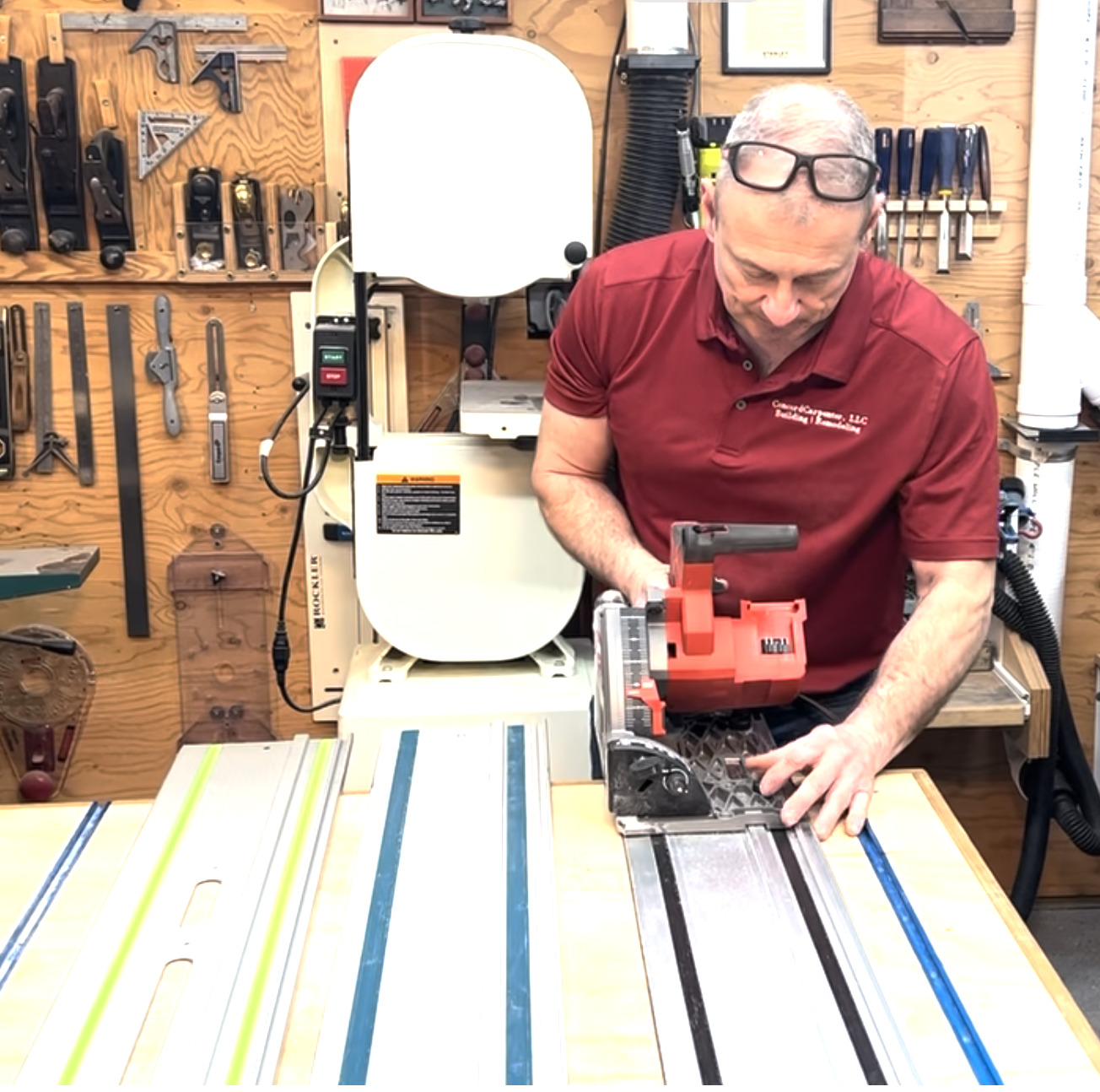
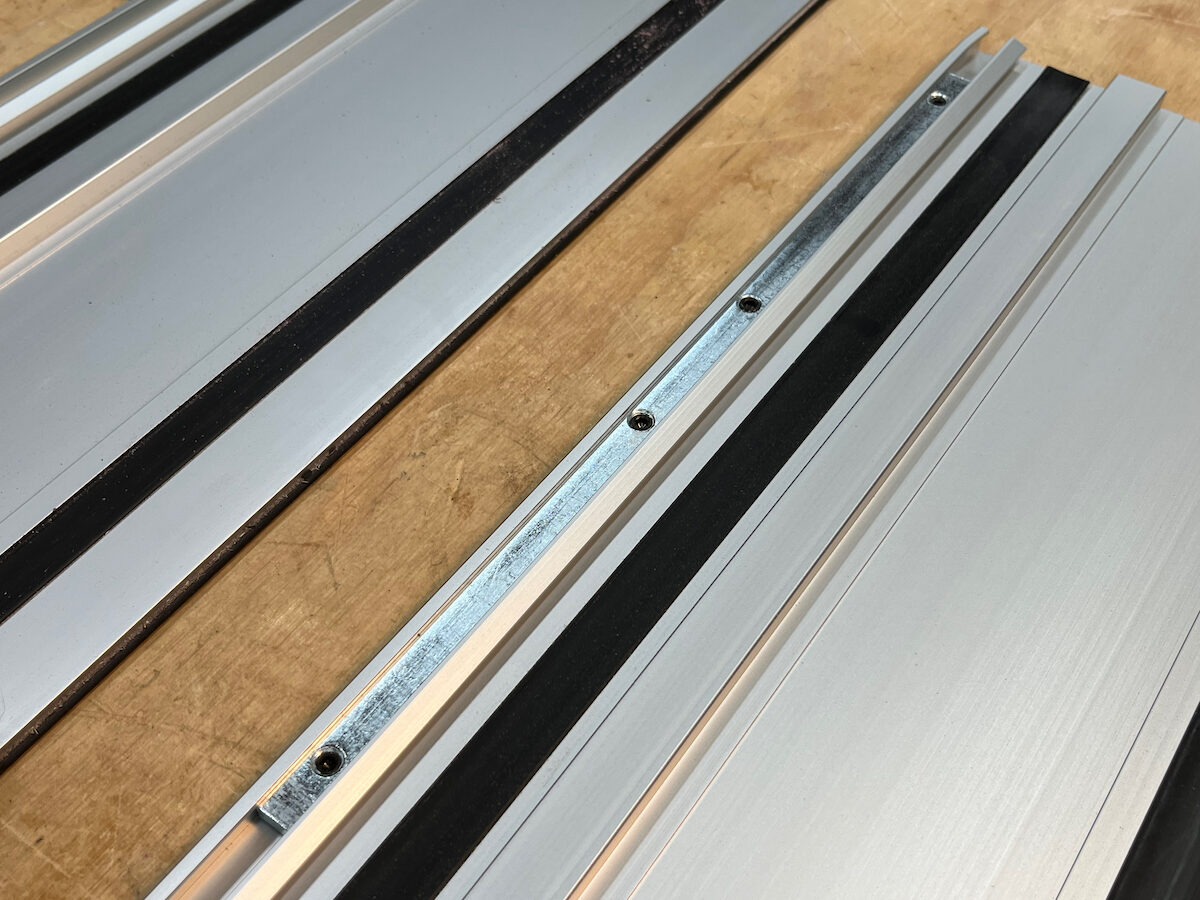
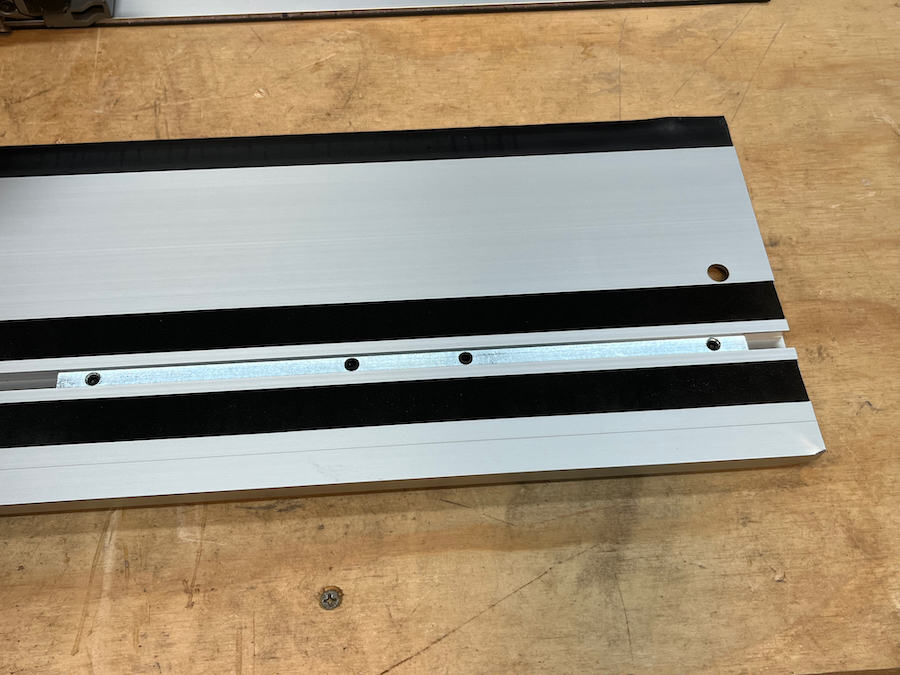
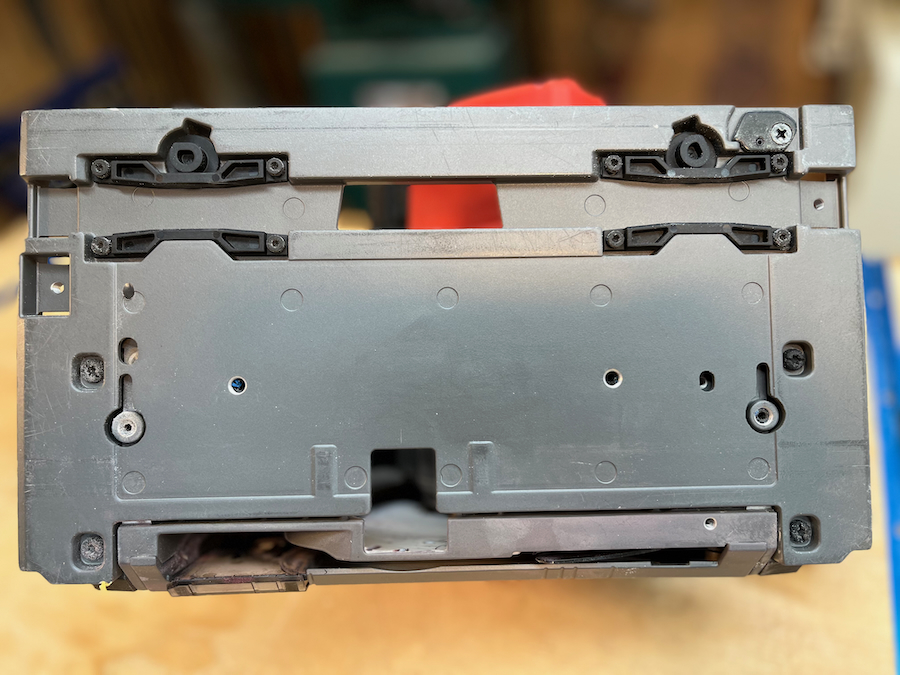
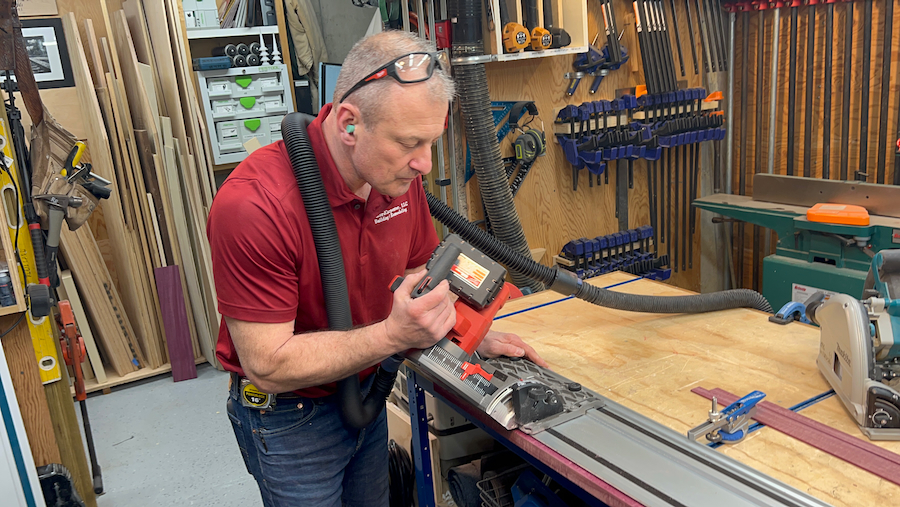
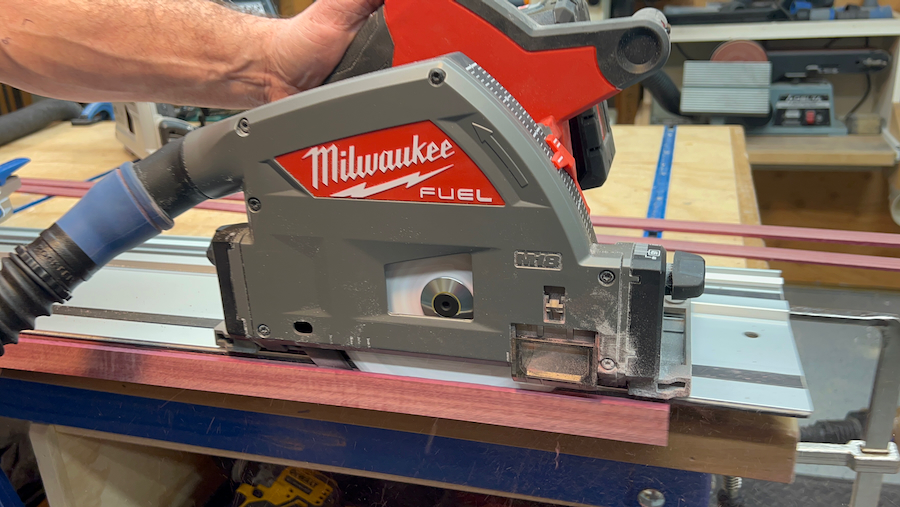
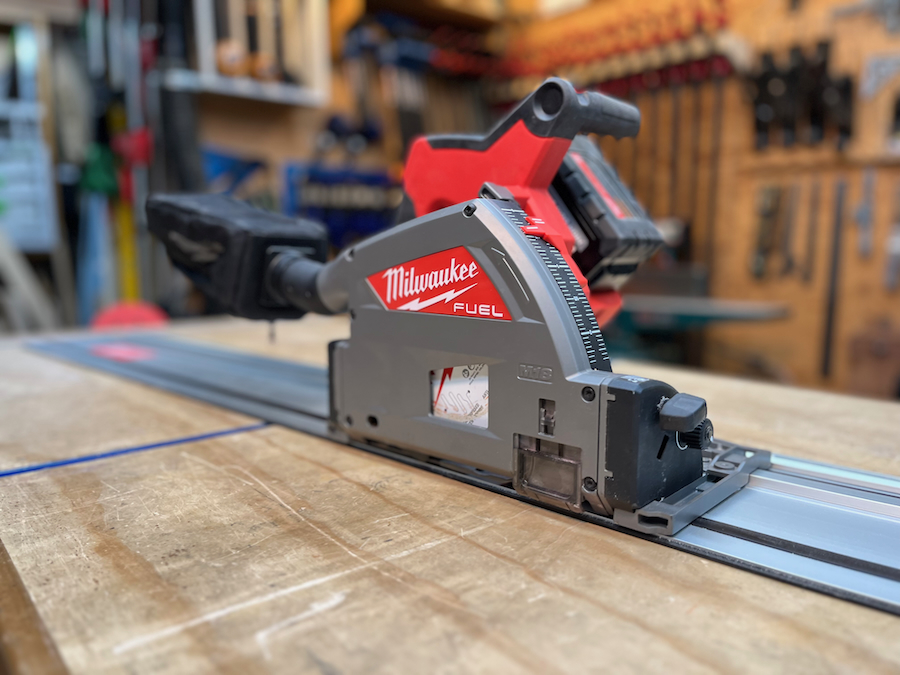
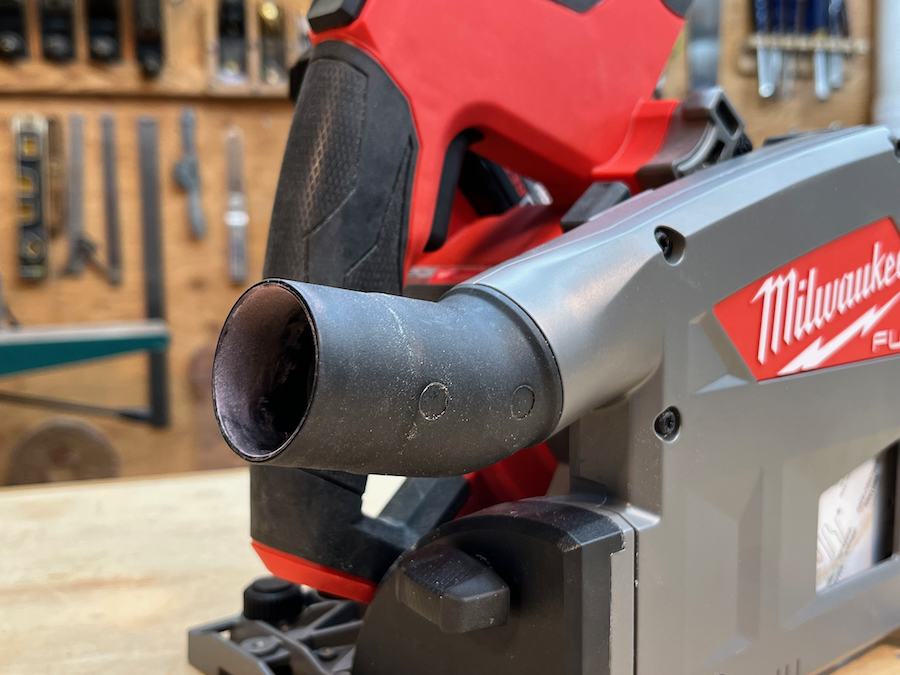
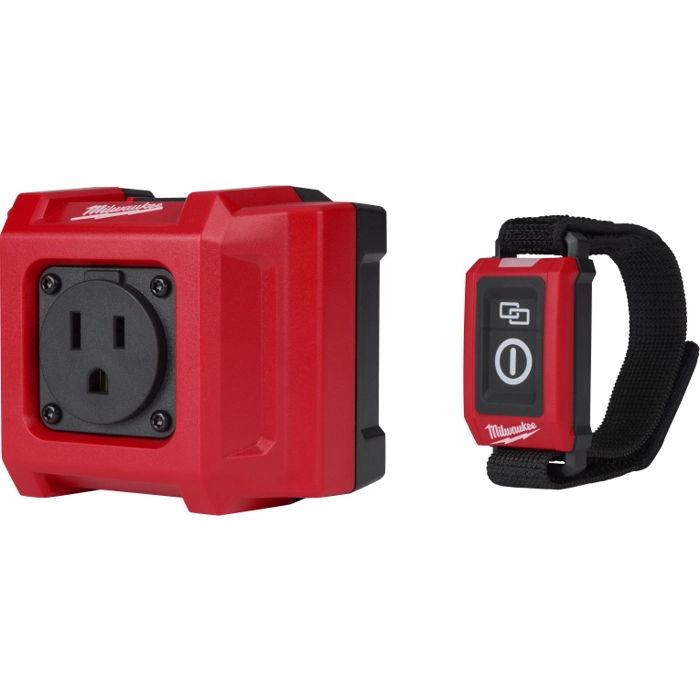
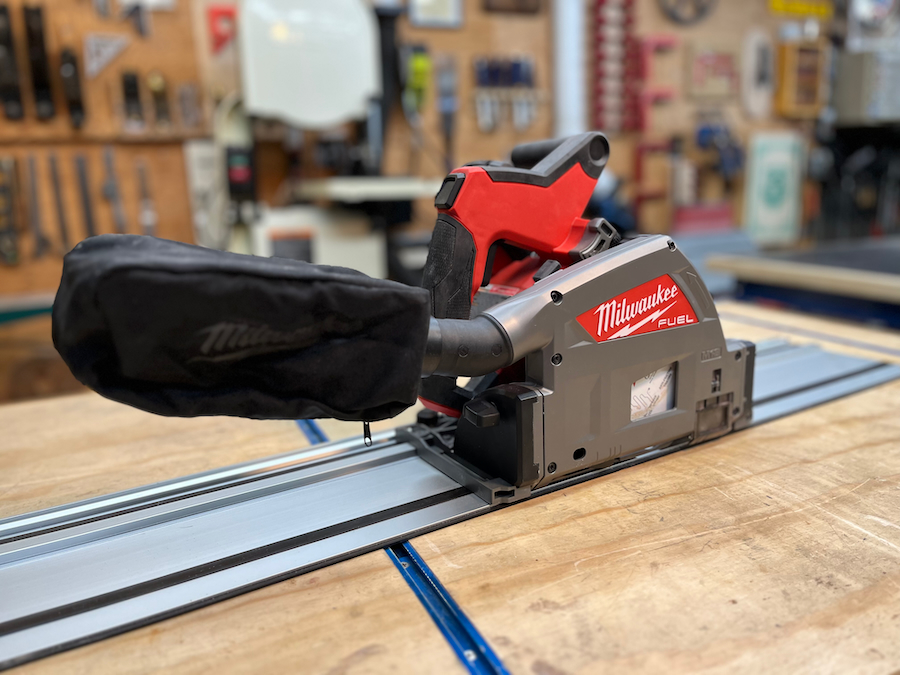
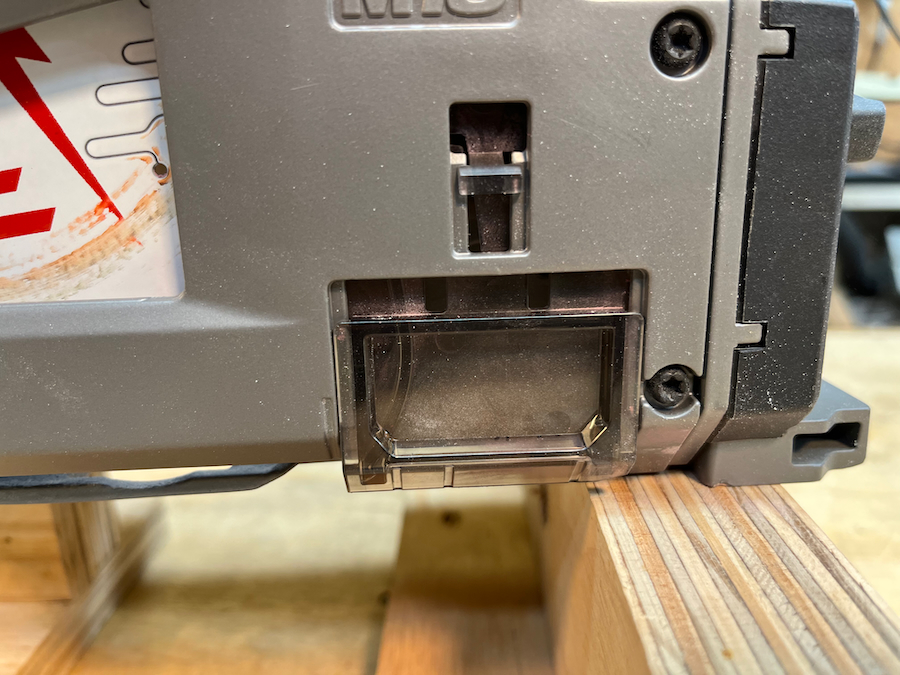
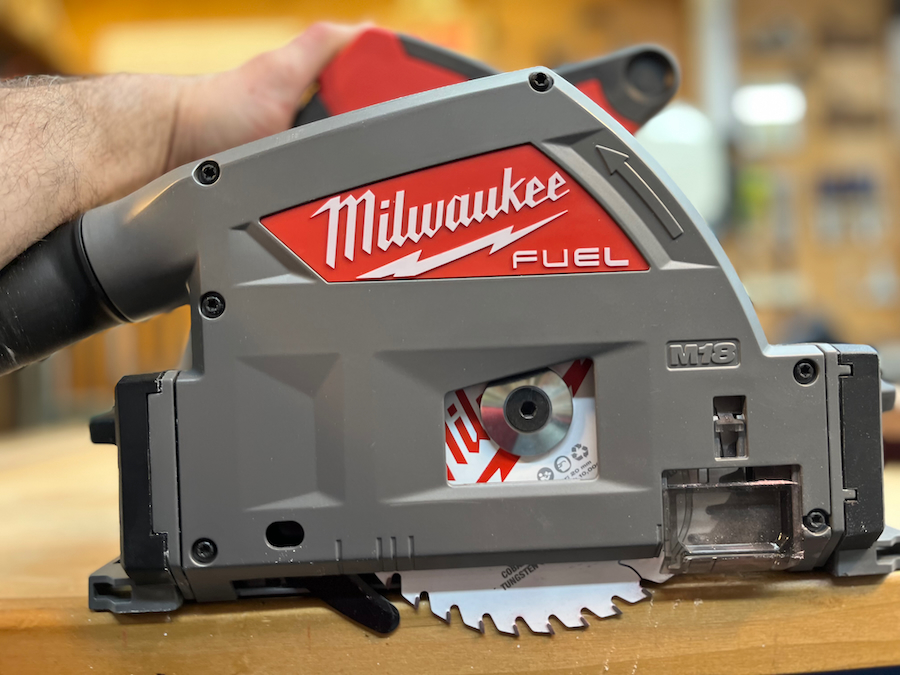
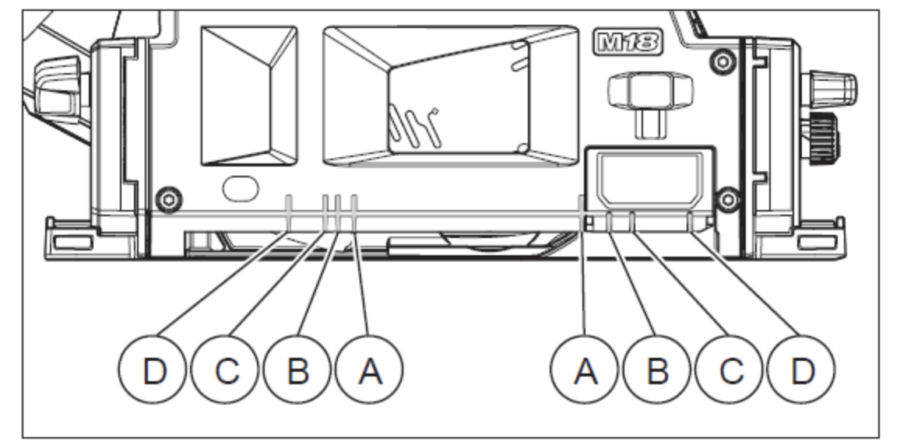
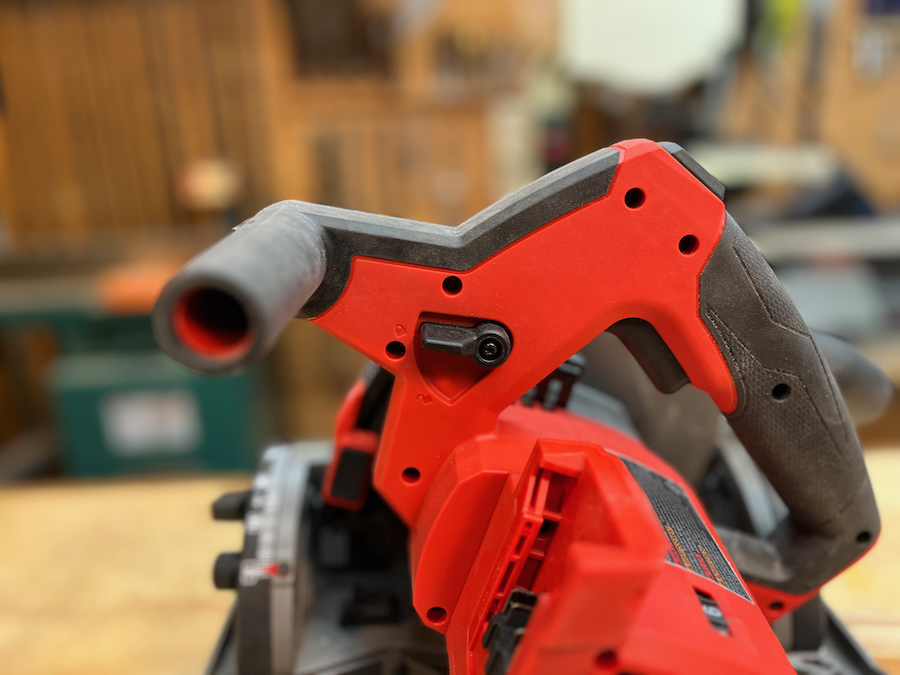
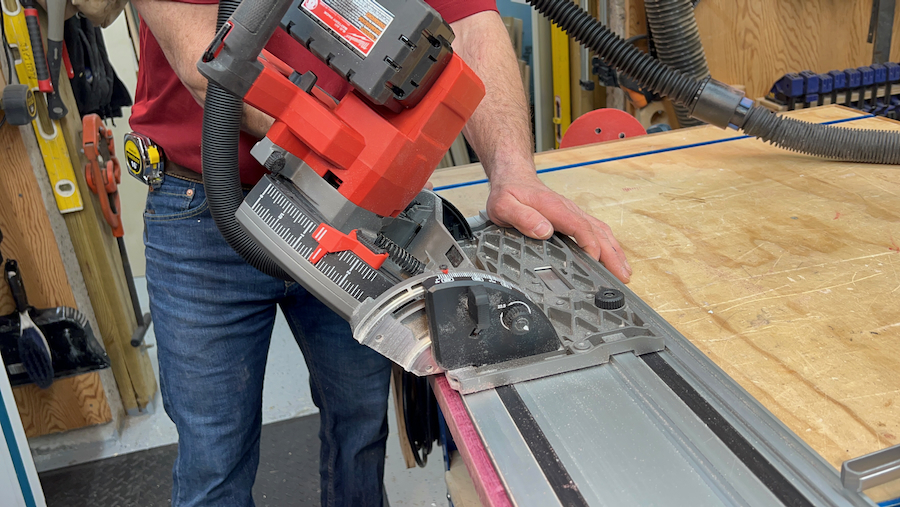
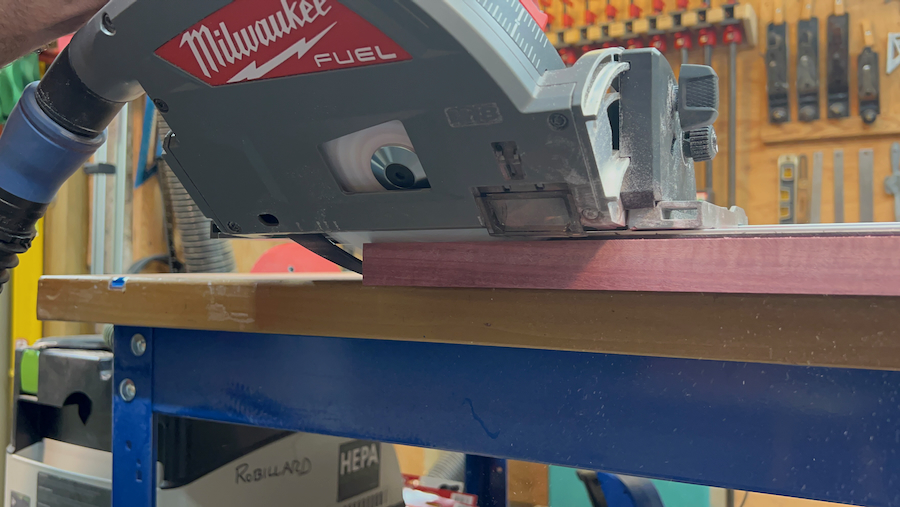
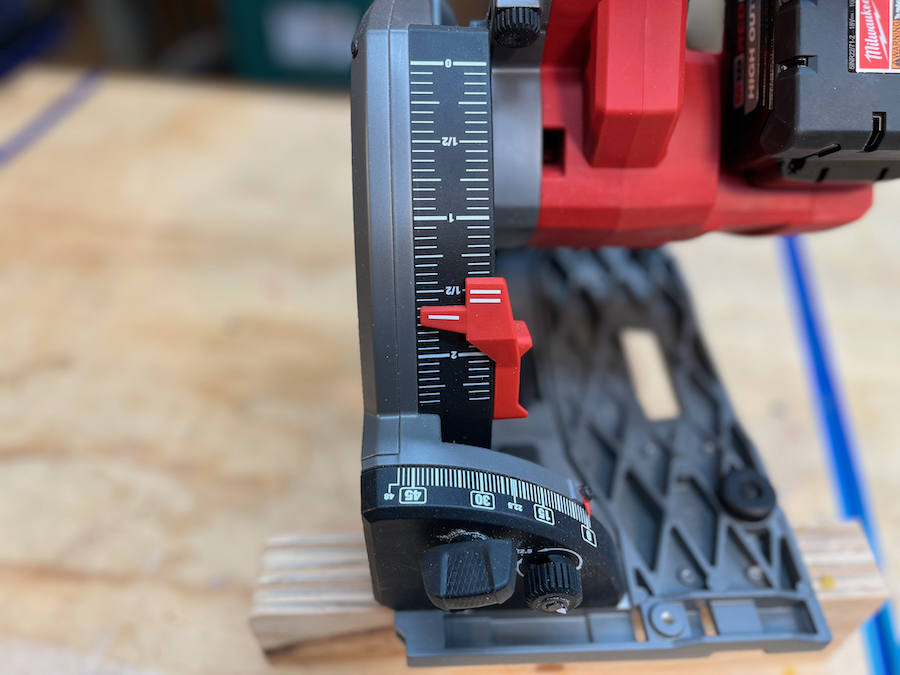
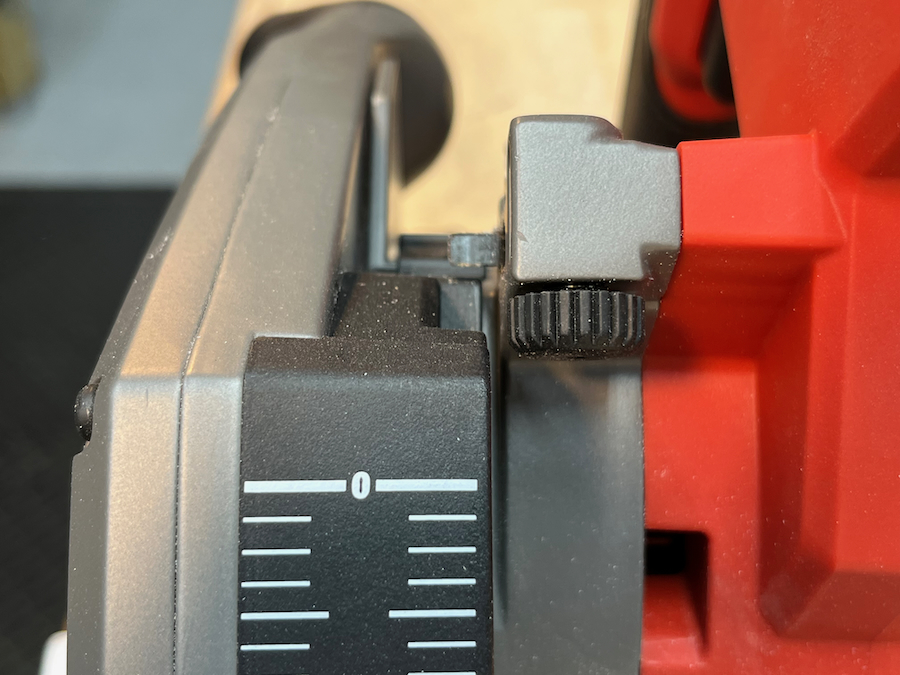
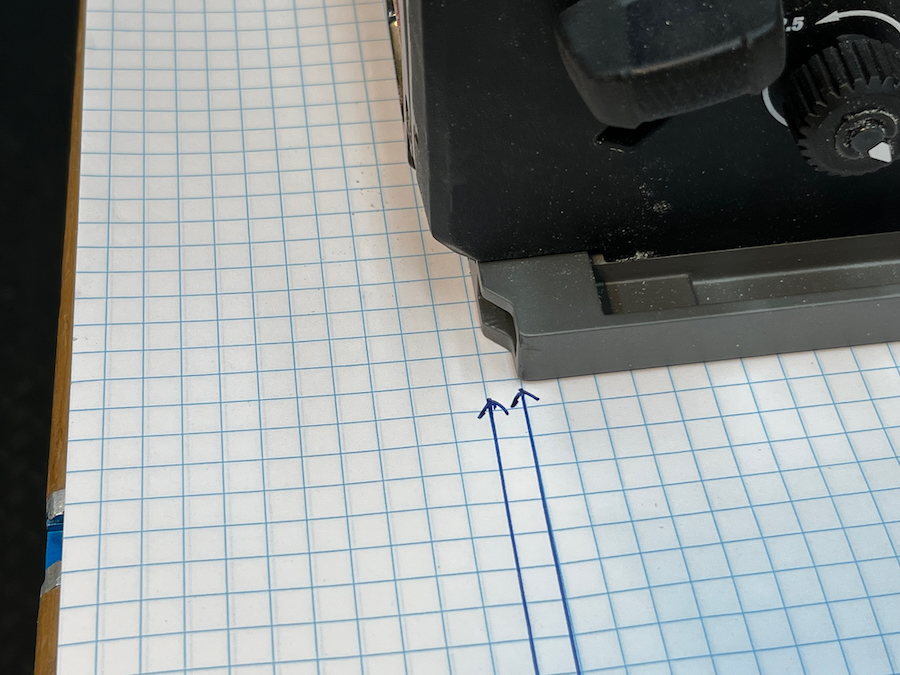
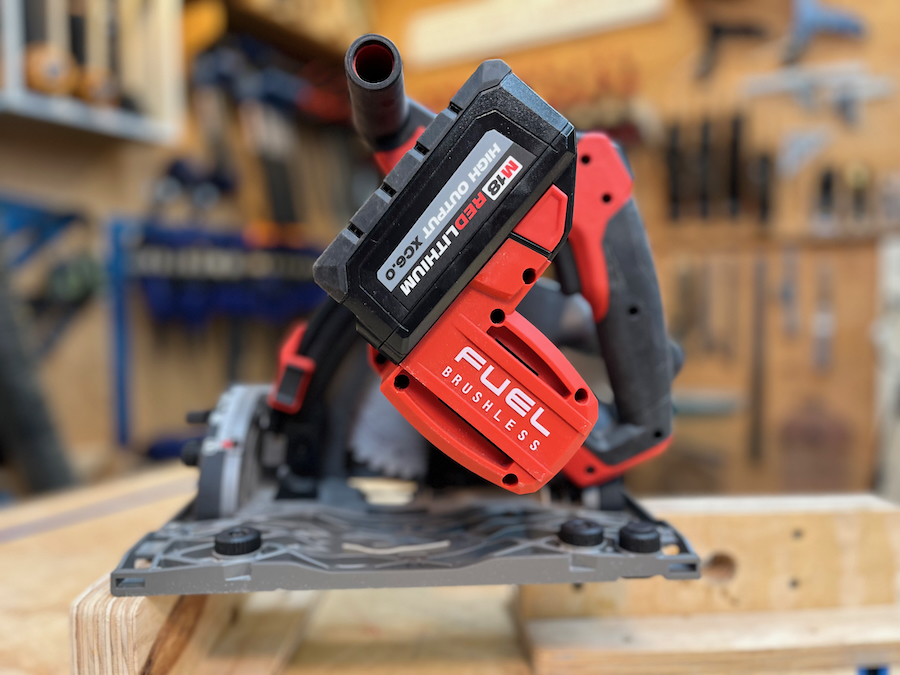
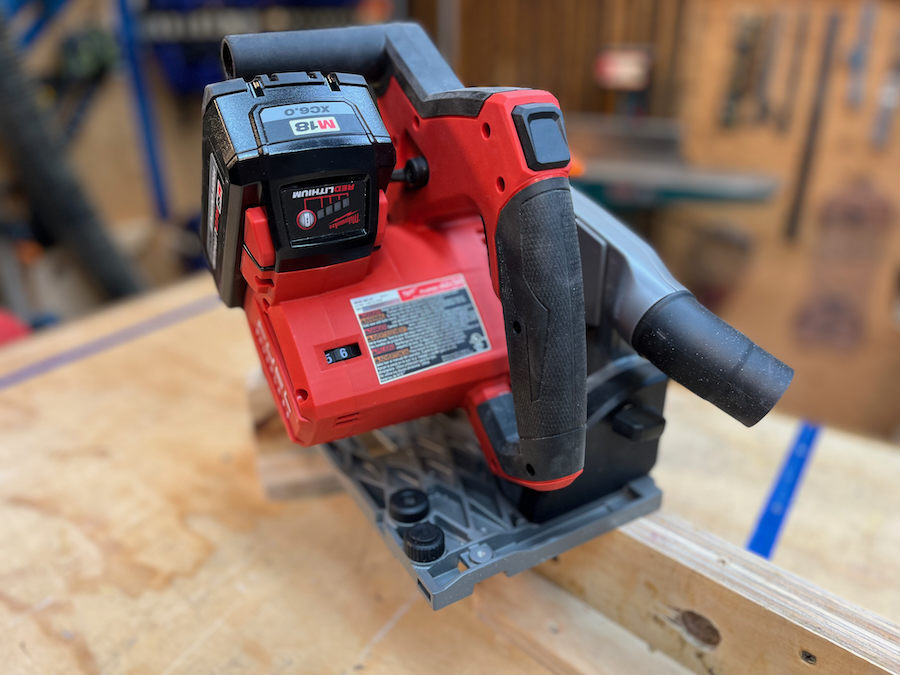
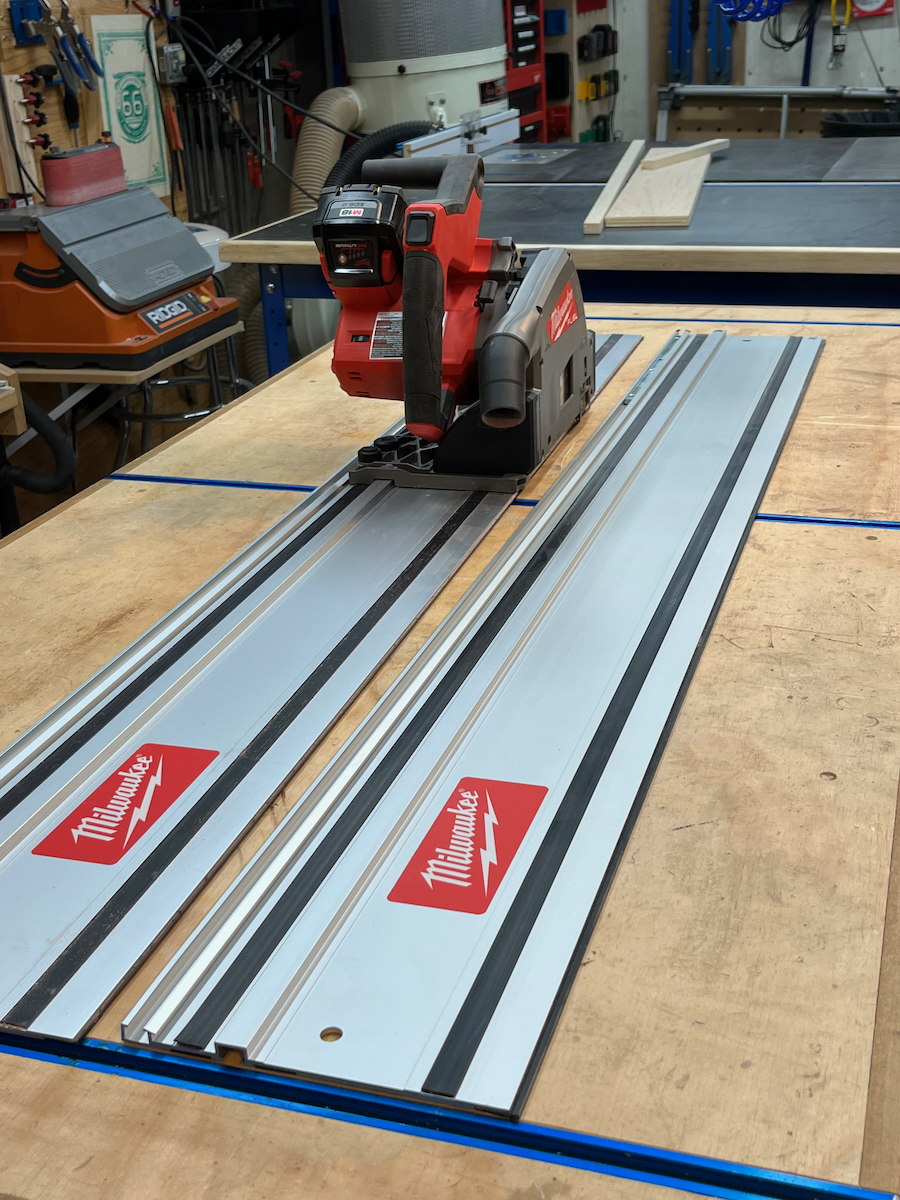
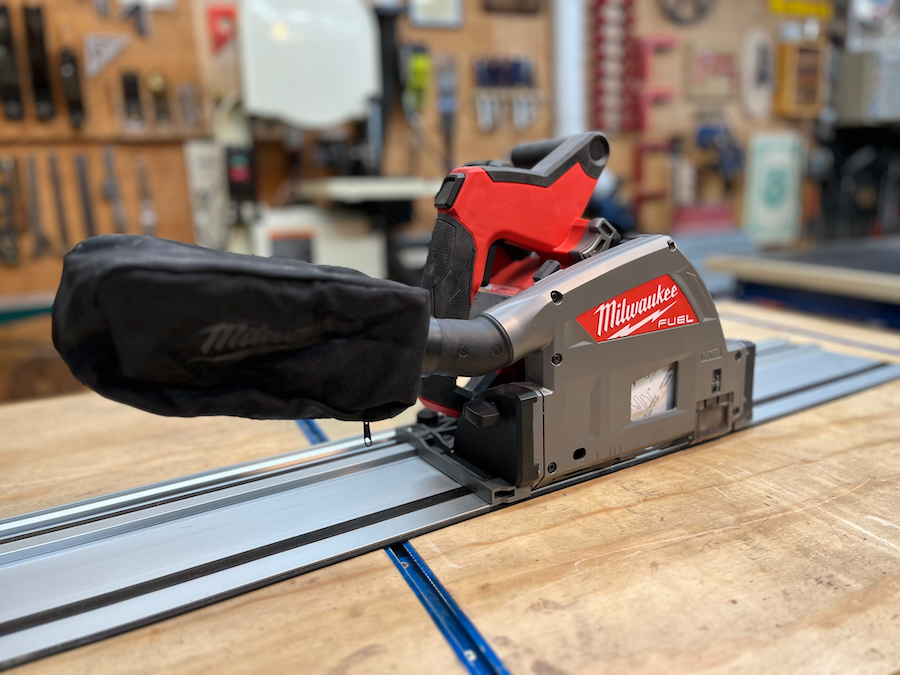
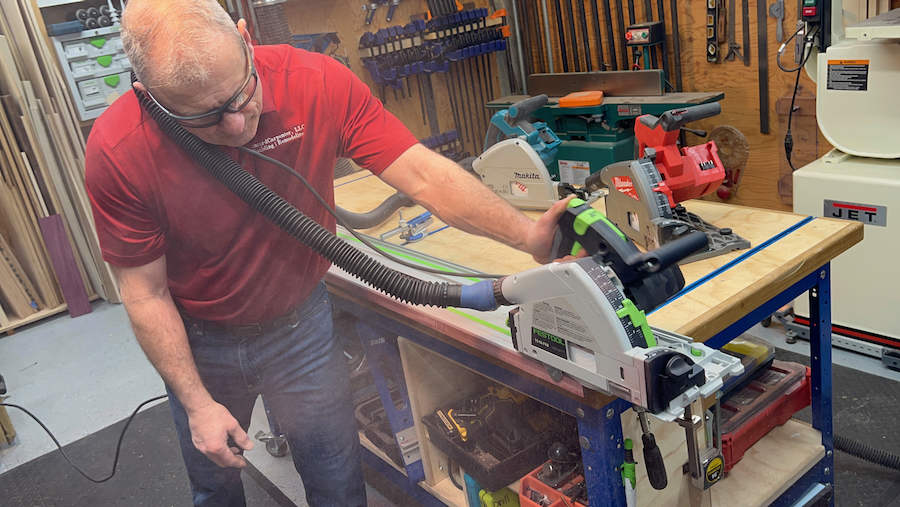
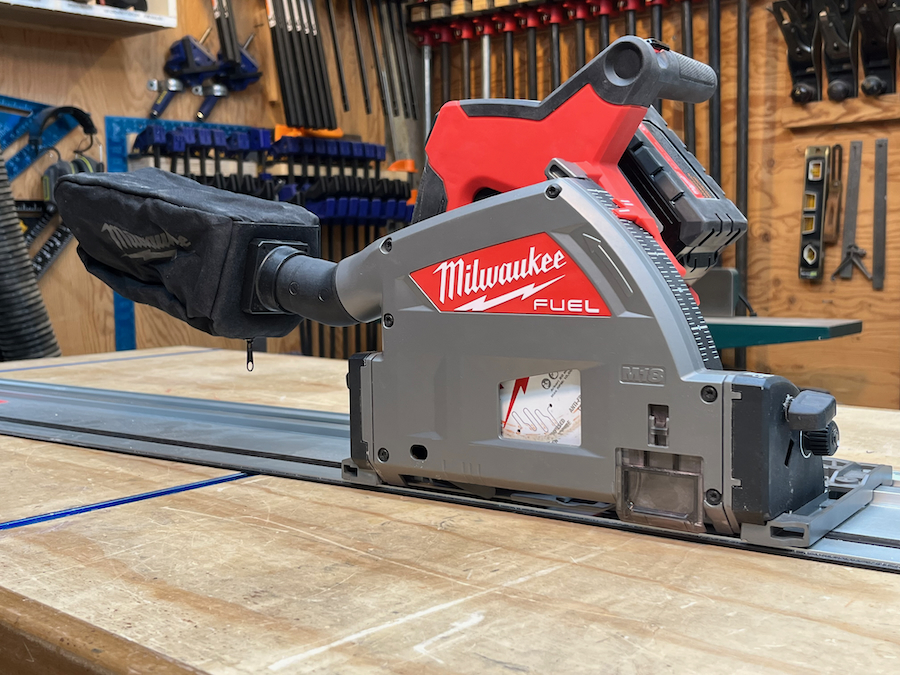
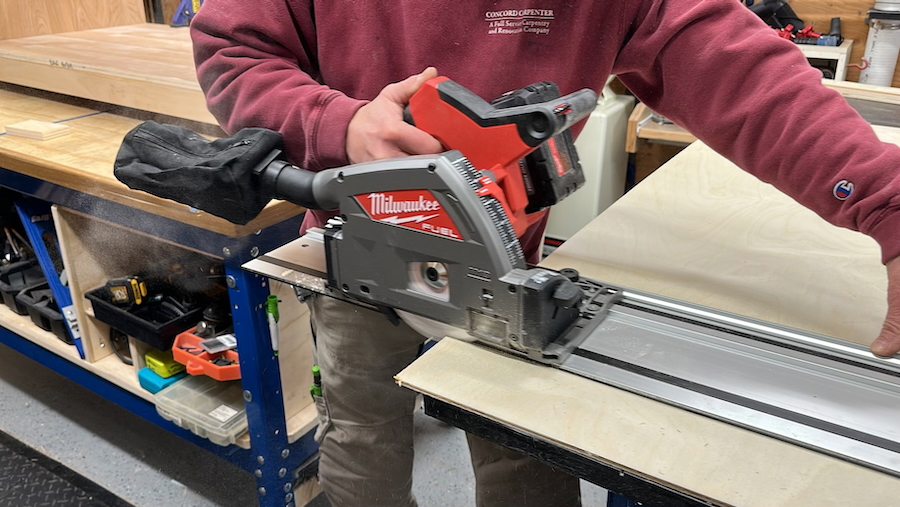












> By using the 6-1/2” blade, they can cut 2x material while their direct competitor, Festool — which has a 6-1/4” blade — cannot.
Do you mean 2x… dimensional lumber? I don’t understand – e.g., the nominal 2 x 6 dimensional lumber is actually around 1.5 x 5.5. Shouldn’t all the competitors be able to cut through 1.5″?
A second quick question — how would you compare the fit, finish, and usability of the Kreg track saw?
Thanks for a great review.
yes, the smaller saw does not make it cleanly thru. Haven’t reviewed the Kreg
Can the base be adjusted in the same manner as the Festool? What I’m after is using the same track for a Festool and Milwaukee where both cut on the splinter guard the same.
Adjusted to what, the track? Yes
Hi Rob,
I bought this saw and rail kit recently here in Ireland.
But the anti tip button knob unit is a blank.
Cant figure out why a product would be launched over here without one of its
main selling differences, a track with locking device on the saw?.
I would be grateful to you if you could find a source for this unit and
drop me the code/suppliers/description.
Regards,
Michael
Hi Mike – that’s weird. Would you like me to ask Milwaukee?